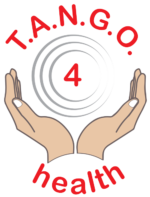Laughter relaxes, reduces stress and releases endorphins, oxytocin and dopamine. Laughter reduces pain.
Pain in your body is experienced as stress. Your blood pressure increased, you tense more muscles than necessary, your heart rate increases and you often think negatively (I often just didn't like it anymore). Laughter helps to relax and raises the pain threshold. Laughter also activates parts of your brain that are less active when you are in pain.
The mentioned hormones (endorphins, oxytocin and dopamine) also help with this. These dilate blood vessels, which lowers your blood pressure. They activate the reward system in your brain. They reduce stress, have an analgesic effect and make you feel good.
It has also been said that when you laugh you tense a lot of facial muscles. This is actually not too bad. Usually we only tense about 15 facial muscles when smiling. Well, of course it matters how you laugh. A smile needs fewer muscles than the giggle.

Did you know that laughing also trains your abs? Having the giggles for 5 minutes is a more fun abs workout than sit-ups or crunches. According to some, you also massage your abdominal organs by contracting and relaxing your diaphragm.
Laughter is a social event. You usually make friends with it. An exception to this is laughing (laughing to make fun of someone else) that is not what this blog is about.
By smiling at someone you don't know yet, you indicate that you have good intentions. To make this mutual, laughter is very contagious. Try not to laugh when someone else smiles at you.
Did you know that in China they give many different meanings to laughter? I've never been to China myself, but I've heard that even the tiniest giggle in a business conversation can be inappropriate. So there are cultural differences. If you want to make clear what you mean in another culture, it is worth reading up on the non-verbal language of this culture.
Would you like to be greeted with a smile? Then start laughing yourself. Even if you don't feel happy (because you're in a lot of pain today) you can put a smile on your face. If you also look up a memory of a very nice moment, you can also retrieve the happy feeling and use it to make your smile more real.
You can also force laughter. This is easier if you are with a group. Just start by imitating the sound of a laugh: Ha.....haha....hahaha....hahahaha.
Continue like this until you say hahahahahahahahahahahaha. You're probably laughing right now. If it's not about yourself, it's about the sounds others make.
Watching laughter films such as the Fat and the Thin (Laurel & Hardy), Charlie Chaplin or other comedies can also induce the feeling of laughter. Tapping jokes or reading jokes also works very well. Like comedians and watching comedian shows.
There are also official forms such as laughter yoga and laughter therapy. Try it out.
You will notice that laughter will make you experience less pain.

Animals laugh too. Sometimes just like people, but usually different. It can also mean something else. When I worked at Apenheul as a holiday worker, I sometimes had 'Berber wait'. This meant that you walked among the visitors in the Berber area and had to make sure that the monkeys did not sit on the audience or take anything out of their pockets or bags.
This could be quite tricky when the visitors were laughing their teeth enthusiastically at the monkeys. In Barbary ape language, this means: I'm afraid of you.
The Barbary apes then dared to come much closer to this fearful person.
On the other hand, animals do know the relaxation of joy. Orangutans, for example, have a playful facial expression. By this they mean: let's play, giggle and have fun. And then they do.
What do you do at home to make yourself smile and cheer up?


